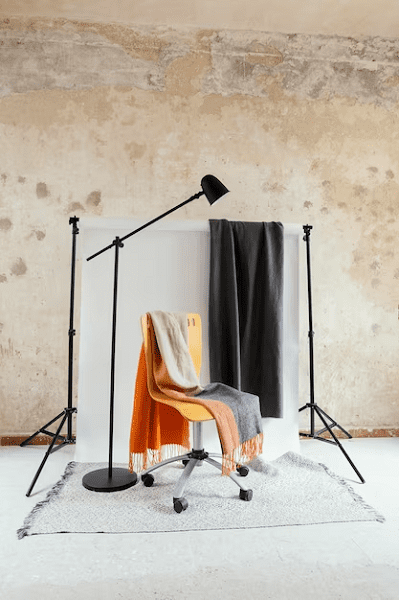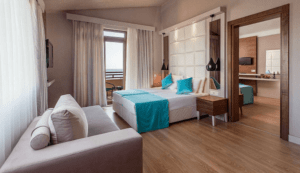Still room‐layout- A still room, historically, is a traditional part of a large household where herbs, flowers, and other ingredients were processed to create medicinal remedies, perfumes, cosmetics, and preserves. It was often staffed by a housekeeper or a stillroom maid who handled these tasks. In modern times, still rooms have evolved and are used for various purposes, such as herbalism, crafting, or as a personal retreat for relaxation. Here are a few types of still room layouts based on different purposes:
- Traditional Still Room:
- This layout maintains the historical function of a still room, where medicinal herbs and ingredients are processed.
- Shelves or cabinets for storing herbs and tinctures.
- A workspace for grinding, distilling, and mixing ingredients.
- Storage for equipment like mortars and pestles, alembics, and drying racks.
- A comfortable area for the preparation of medicinal remedies.
- Herbalism and Apothecary Room:
- Similar to a traditional still room but adapted for modern herbalism and natural remedies.
- Storage for herbs, essential oils, and dried flowers.
- Workspace for creating tinctures, salves, and herbal remedies.
- Shelving for herbal books and references.
- Comfortable seating for consultations.
- Crafting and DIY Room:
- A room dedicated to various crafting activities.
- Ample workspace for sewing, knitting, or other crafts.
- Storage for crafting supplies and materials.
- Good lighting and ergonomic seating.
- Inspirational decor to enhance creativity.
- Personal Retreat Still Room:
- Designed as a serene space for relaxation and personal well-being.
- Comfortable seating for reading, meditation, or relaxation.
- Soft colors and soothing decor to create a calming atmosphere.
- Indoor plants or flowers for a touch of nature.
- Essential oil diffusers or scented candles for aromatherapy.
- Gardening and Potting Room:
- A room dedicated to gardening and potting plants.
- Workbench for repotting and tending to plants.
- Storage for gardening tools, pots, and soil.
- Hooks or racks for hanging gardening equipment.
- A sink for easy cleanup.
- Craft Brew or Distilling Room:
- For those interested in homebrewing, winemaking, or distilling spirits.
- Equipment for brewing, fermenting, and distilling.
- Storage for ingredients like grains, hops, and yeast.
- Bar or tasting area with stools for sampling.
- Tea and Herbal Infusion Room:
- A room dedicated to the art of tea and herbal infusion.
- Shelving for tea leaves, herbs, and teapots.
- A tea preparation area with a kettle and teapots.
- Cozy seating for tea tastings or relaxation.
The layout and design of a still room can vary greatly depending on its purpose and the preferences of the owner. It should be a functional, comfortable, and aesthetically pleasing space that suits your needs and interests.
What is Still room‐layout
A still room layout refers to the organization and design of a room traditionally known as a “still room.” Historically, a still room was a dedicated space in a large household, typically found in manor houses or estates, where herbs, flowers, and other natural ingredients were processed and prepared for various purposes. These purposes included creating medicinal remedies, perfumes, cosmetics, and preserves. The name “still room” derived from the use of distillation equipment, such as stills, for making herbal extracts and essential oils.
While the historical use of still rooms has diminished with advancements in modern medicine and industry, the concept of a still room has evolved. Today, a still room can serve various purposes, such as herbalism, crafting, or personal retreat. The layout of a still room depends on its intended function. Some common features of a still room layout might include:
- Workspace: A dedicated area for preparing and processing ingredients. This might include countertops, tables, or workbenches.
- Storage: Shelves, cabinets, or storage units for herbs, essential oils, containers, tools, and equipment.
- Lighting: Good lighting is essential for tasks like grinding herbs, mixing ingredients, or crafting.
- Comfortable Seating: If the room is also a space for relaxation or consultation, comfortable seating, like chairs or a cozy reading nook, can be included.
- Equipment: Depending on the purpose of the still room, it might include specialized equipment such as distillation apparatus, mortars and pestles, crafting tools, or brewing equipment.
- Organization: Efficient storage solutions, like labeled jars or containers for ingredients, to keep the room tidy and functional.
- Decor: Decorative elements or design choices that reflect the intended use of the still room. For example, calming colors for a relaxation space or inspiring decor for a crafting room.
The specific layout of a still room can vary widely based on the owner’s preferences and the purpose of the room. It’s important to tailor the room to your needs, ensuring it’s a functional and inviting space for your chosen activities.
Who is Required Still room‐layout
The term “Required Still Room-Layout” is not a standard or commonly used term. It appears to be a specific or specialized requirement, possibly within a particular context or industry. To provide more accurate information, I would need additional context or details about where or in what context you encountered this term. If you can provide more information, I’ll do my best to assist you further.
When is Required Still room‐layout

The timing for planning a still room layout would depend on your specific needs and circumstances. Here are some general considerations:
- When Setting Up a New Space: If you’re creating a still room from scratch or converting an existing room into a still room, the layout planning typically happens during the initial stages of the project. You should plan the layout before acquiring furniture or equipment.
- Before Renovations: If you plan to renovate or remodel an existing room to serve as a still room, you should decide on the layout and design before starting the renovation work.
- When Changing the Purpose of a Room: If you’re repurposing a room to become a still room, it’s best to plan the layout when you decide to make this change.
- Based on Your Needs: The timing also depends on your specific needs. If you require a still room for a particular activity (e.g., herbalism, crafting, or distilling), plan the layout when you’re ready to engage in that activity.
- Consider Seasonal Factors: If your still room is related to gardening or preserving, consider the timing in relation to the seasons. For example, planning a preserving or canning room would be most practical during the harvest season.
In summary, the timing for planning a still room layout is flexible and depends on your individual circumstances and the purpose of the room. It’s generally best to plan the layout before making any significant changes or purchases to ensure that the room meets your needs and functions effectively.
Where is Required Still room‐layout
The location of a required still room layout would depend on your specific needs and circumstances. A still room, which is traditionally used for processing herbs, flowers, and other natural ingredients for various purposes, can be located in different parts of a building or property. Here are some considerations for where you might place a still room:
- Indoors: A still room is often located within the main house or building. It may be a dedicated room on a residential property, or it could be part of a larger facility for herbalism, crafting, or other activities.
- Garden or Outdoor Space: Some people choose to have a still room or workspace in their garden or outdoor area, especially if they are primarily working with fresh herbs, flowers, or plants. An outdoor still room might be a covered or sheltered space to protect against the elements.
- Garage or Shed: In some cases, a garage or a garden shed can be converted into a still room or crafting space. This can be a practical solution if you have limited indoor space.
- Basement: A basement can be a suitable location for a still room, particularly if you need a cool and dark space for storing herbs or other ingredients.
- Separate Building: In larger estates or properties, a separate building or cottage may be designated as the still room. This allows for a dedicated space with ample room for storage and equipment.
- Commercial Space: If you are operating a business related to herbs, distilling, or crafting, you might choose to have a still room layout in a commercial space or workshop.
The choice of location for your required still room layout will depend on factors such as available space, the specific purpose of the still room, and your personal preferences. It’s important to choose a location that provides the necessary conditions for the activities you plan to undertake, such as proper lighting, ventilation, and access to utilities if needed.
How is Required Still room‐layout
Creating a required still room layout involves careful planning and consideration of the specific purpose and needs of the room. Here’s a step-by-step guide on how to design a still room layout:
- Define the Purpose:
- Determine the primary purpose of your still room. Is it for herbalism, crafting, distilling, or another activity? This will guide your layout and equipment choices.
- Choose the Location:
- Select a suitable location for your still room, considering factors like available space, access to water and electricity, and the room’s proximity to the main house or other facilities.
- Measure the Space:
- Measure the dimensions of the room to accurately plan the layout. Make a rough sketch of the room’s shape and size.
- Consider Workflow:
- Visualize the flow of work within the still room. Arrange the space so that it’s efficient and conducive to your activities. Consider the sequence of tasks and create zones for different functions.
- Storage Solutions:
- Determine the type and amount of storage you’ll need for herbs, equipment, ingredients, and finished products. Shelves, cabinets, and drawers can help keep things organized.
- Workspaces:
- Set up dedicated workspaces for specific tasks. For example, have a counter or table for herbal preparation, a crafting station, or a distillation area if applicable.
- Lighting:
- Ensure good lighting, especially in work areas. Natural light is ideal, but also consider task lighting for specific tasks like crafting or reading.
- Ventilation:
- Adequate ventilation is important, especially if you’re working with herbs, essential oils, or distillation. Make sure there’s a way to remove odors or fumes if necessary.
- Utilities:
- If you need water or electricity for your activities, ensure that these utilities are readily available in your still room.
- Furniture and Equipment:
- Choose appropriate furniture and equipment for your specific activities. This might include tables, chairs, sinks, distillation apparatus, crafting tools, or herbal processing equipment.
- Safety Measures:
- If your activities involve potentially hazardous materials or processes, implement safety measures like fire extinguishers, first aid kits, and proper storage for flammable items.
- Aesthetics and Decor:
- Consider the aesthetic and ambiance you want in your still room. Choose colors, decor, and furnishings that create a pleasant and inspiring atmosphere.
- Organization and Labeling:
- Keep the room well-organized and label containers and shelves for easy access to ingredients and tools.
- Accessibility:
- Ensure that the layout is accessible and ergonomically designed for your comfort and ease of use.
- Test and Adjust:
- Once the still room is set up, test the layout to make sure it works efficiently for your activities. Adjust as needed.
Creating a required still room layout is a highly individualized process based on your specific needs and preferences. By carefully planning and organizing the space, you can create a functional and enjoyable environment for your chosen activities.
Case Study on Still room‐layout
Creating a Modern Herbal Still Room
Background: Jane and David, a couple passionate about herbalism, decided to convert an underutilized room in their home into a modern herbal still room. They wanted a dedicated space to process herbs, create herbal remedies, and store their extensive collection of botanical ingredients.
Challenges:
- Limited Space: The room was relatively small, measuring 10 feet by 12 feet.
- Efficient Workflow: They needed to establish a well-organized workflow to maximize the use of limited space.
- Safety: Proper storage and handling of herbs, oils, and equipment were essential for safety.
- Aesthetic and Atmosphere: They wanted the room to have a welcoming and calming atmosphere.
Solution:
1. Defining Purpose and Zones:
- They identified three main zones: preparation, storage, and workstations. The preparation area was dedicated to processing herbs and ingredients. The storage zone included shelves for dried herbs, labeled jars, and essential oils. The workstation area had a counter with multiple workstations for making remedies and crafting herbal products.
2. Layout and Furniture:
- To maximize space, they used wall-mounted shelves and storage units for herbs and ingredients. A central island with built-in storage drawers and a sink served as the primary workspace. They added a small table with comfortable chairs for consultation and research.
3. Lighting and Ventilation:
- They installed adjustable LED task lighting above each workstation and shelving unit. A window was fitted with sheer curtains to allow natural light while maintaining privacy. A small exhaust fan provided ventilation when working with essential oils.
4. Equipment and Safety:
- Jane and David invested in a high-quality copper still for essential oil distillation, which was placed in a dedicated corner with proper ventilation. Safety equipment, such as fire extinguisher and first-aid kit, was easily accessible. Flammable materials were stored in a fire-resistant cabinet.
5. Aesthetics and Decor:
- They chose calming earthy tones for the room’s color scheme. Potted herbs and flowers were placed on window sills. Inspirational quotes related to herbalism were framed on the walls. They also hung a tapestry with botanical motifs.
6. Organization and Labeling:
- All jars and containers were labeled with the name and properties of the stored herbs and oils. Drawers and storage units were organized with dividers and labeled accordingly.
7. Test and Adjust:
- After the room was set up, Jane and David worked in it for a few weeks, making adjustments to optimize the workflow and ensure everything was accessible and efficient.
Results: Jane and David successfully transformed a small, underutilized room into a functional modern herbal still room that met their needs for processing, crafting, and storage of herbal ingredients. The room not only enhanced their herbalism practices but also provided a calming space for consultation and research.
This case study illustrates the importance of careful planning and thoughtful design in creating a still room that meets the specific needs and preferences of the individuals using it.
White paper on Still room‐layout
Title: White Paper on Still Room Layout: Designing Functional and Purposeful Spaces
Table of Contents:
- Abstract
- A brief summary of the white paper’s key findings and recommendations.
- Introduction
- Definition of a still room and its historical context.
- The evolution of still rooms and their modern applications.
- The significance of an efficient still room layout.
- The Planning Phase
- Defining the purpose and goals of the still room.
- Selecting an appropriate location.
- Assessing available space and resources.
- Designing the Still Room Layout
- Determining workflow and activity zones.
- Organizing storage solutions.
- Considering lighting and ventilation.
- Selecting furniture and equipment.
- Ensuring safety measures.
- Aesthetic and Functional Elements
- The role of aesthetics and ambiance in still room design.
- The use of decor, color schemes, and furnishings.
- Creating an inspiring and calming atmosphere.
- Organization and Labeling
- Effective organization strategies for herbs, ingredients, and equipment.
- The importance of proper labeling and inventory management.
- Case Studies
- Real-world examples of successful still room layouts for various purposes.
- Best Practices
- A summary of best practices for designing still room layouts.
- Challenges and Solutions
- Common challenges in designing still rooms and how to overcome them.
- Regulations and Safety Compliance
- Overview of safety regulations and guidelines, especially in the context of distillation and herbalism.
- Benefits of a Well-Designed Still Room
- How a well-designed still room enhances productivity, creativity, and well-being.
- Future Trends
- Emerging trends in still room design, such as eco-friendly practices and smart technology integration.
- Conclusion
- Recap of key points discussed in the white paper.
- Emphasis on the importance of personalized, functional, and safe still room layouts.
- References
- Citations for sources used in the white paper.
- Appendices
- Any additional information, charts, or diagrams that support the content.
Remember that a white paper should provide authoritative and well-researched information, supported by credible sources and real-world examples. It should serve as a valuable resource for those interested in designing their own still rooms or understanding the principles behind effective layout planning.





